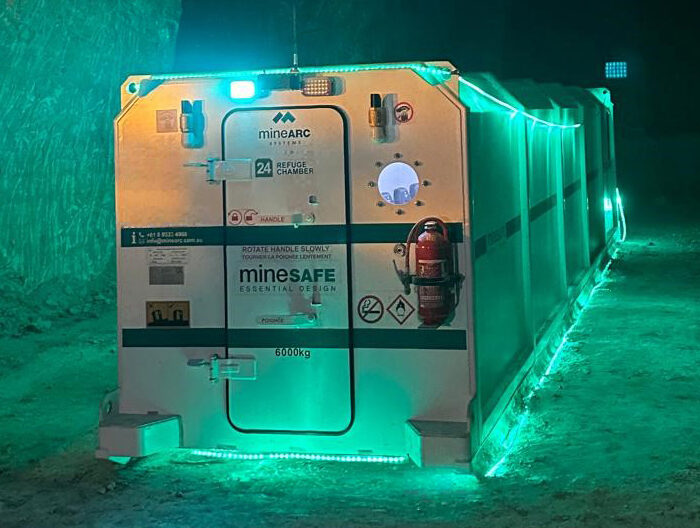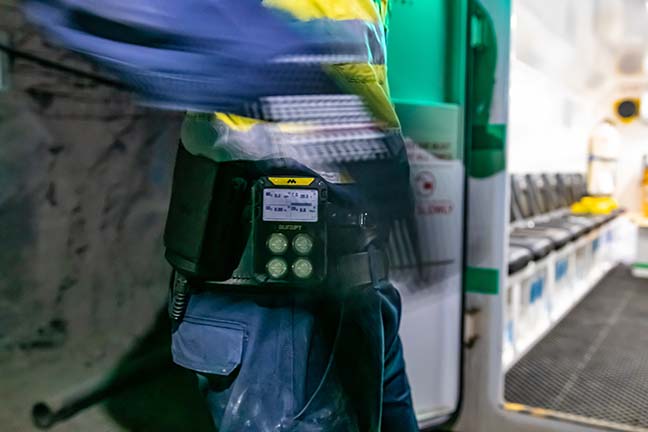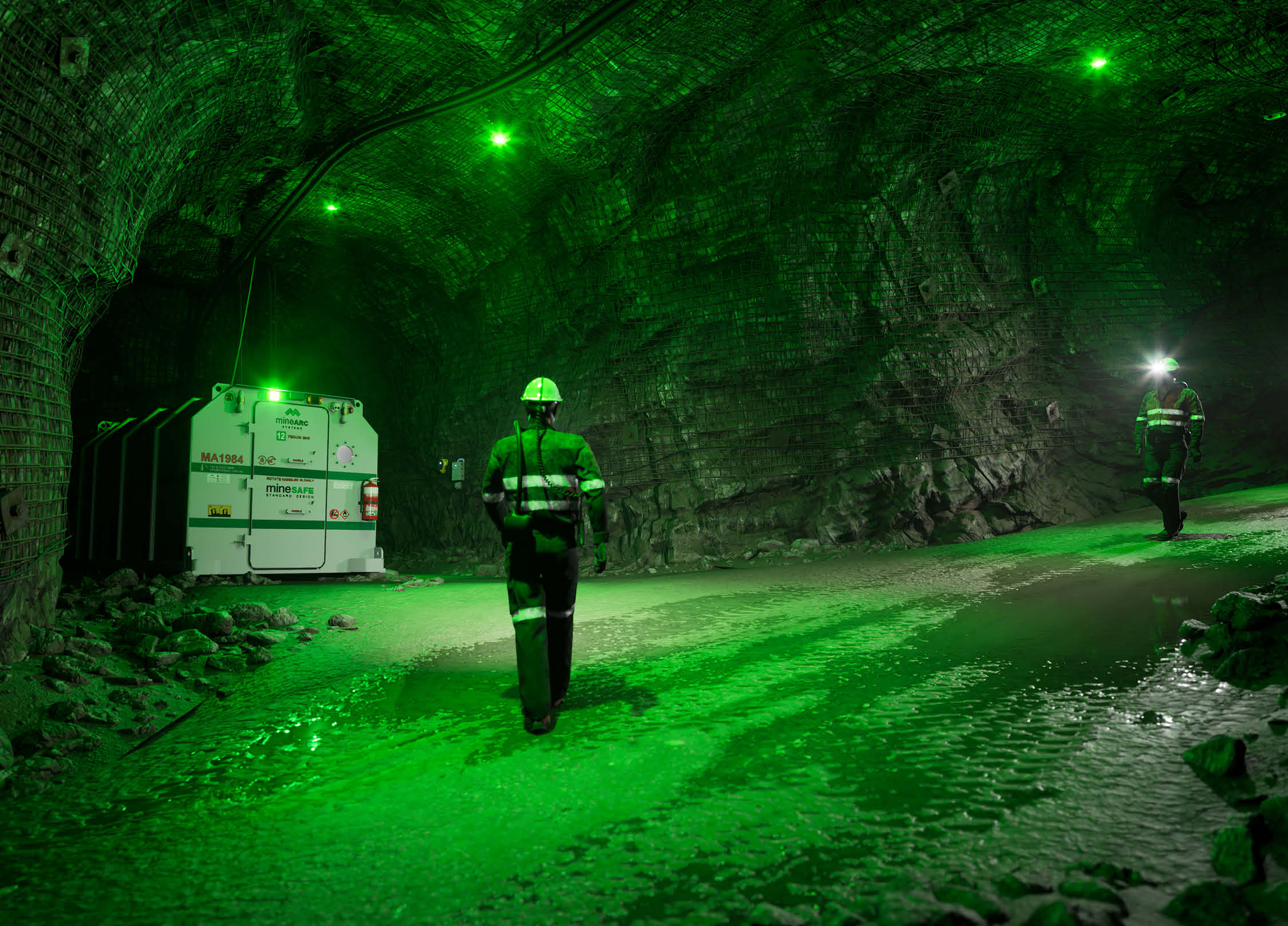Compressed air use in refuge chambers is the primary source of breathable air and positive pressure. However, its supply demands a high amount of resources and cost.
Electricity demands are increasing. South African mines, in particular, are experiencing the effects of increased load shedding and interrupted power supply. To face these demands, sites seek sustainable solutions to efficient energy usage, such as those offered by compressed air management products.
Compressed air is vital to mining and underground construction. It is a popular method used in ventilation, material handling, tool operation, and other essential services due to its ease of use, reliability and versatile nature.
In modern society, saving energy is critical. Whether cost or environmental considerations are the driving factors, reducing wasted energy use is a universal goal.
Key Takeaways
- Poorly managed compressed air will add significant costs to site
- Improving compressed air usage will decrease energy and maintenance costs over the systems lifetime
- A recent case study used simulations to demonstrate the potential savings of effective compressed air management to refuge chambers
Compressed Air Energy Use
As it is such a prominent consumption of energy within multiple industries, the need arises for long-term sustainable initiatives to be developed. Compressed air accounts for a significant portion of electricity across the globe, for example, 10% of total industrial power in Australia, 10% of all electricity in the United States and 9 -20% of the total mining energy consumption in South Africa.
A common misconception with compressed air systems is its seemingly lower costs. This myth has derived from an imperfect understanding or lack of tracking of compressed air. Typically, over 10 years, the energy cost of running a compressor system equates to almost three-quarters of its total expenditure. With this in mind and the growing price and demands on electricity, improving efficiencies is vital for business.
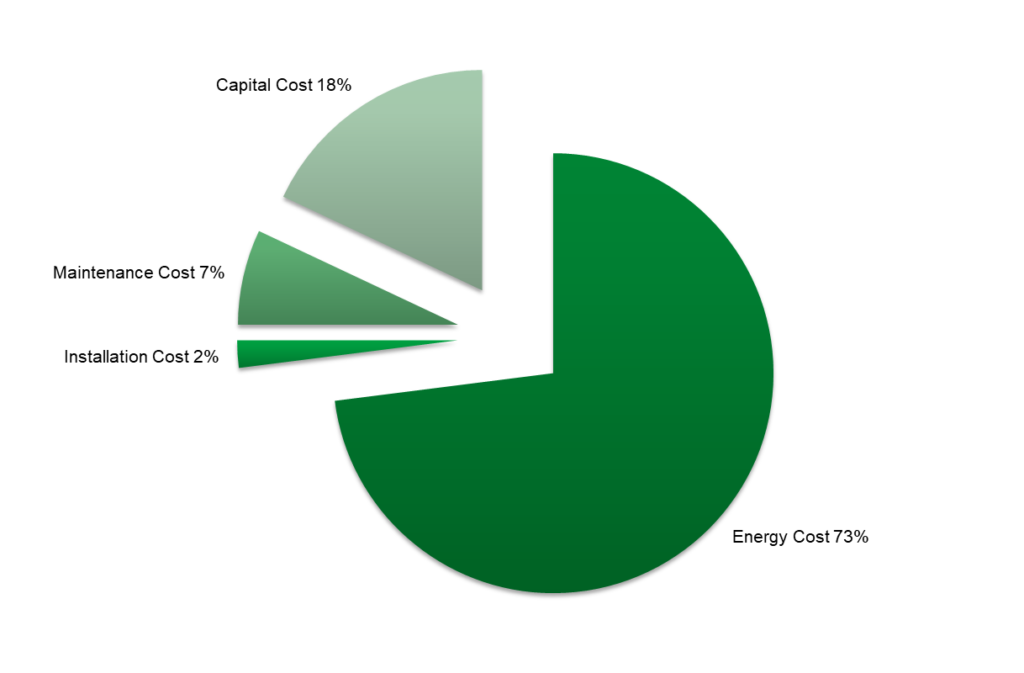
Opportunities for Compressed Air Efficiency
There are small and large scale actions a company can take to address its compressed air usage. These range from internal changes in behaviours to installing a new compressor system. Several factors will impact the direction a company can take. If considering improving the efficiency of an existing system, some simple steps include:
- Review current and future air demand to ensure only appropriate equipment has compressed air connected
- Reduce compressed air wastage by identifying, measuring and rectifying leakages
- Address pressure drops between the compressor and point of use
- Evaluate air receiver size to ensure storage meets the equipment demands
- Maintain and service the compressed air system regularly to prevent damage and exponential costs
- Ensure the system is adequate for work conducted on-site
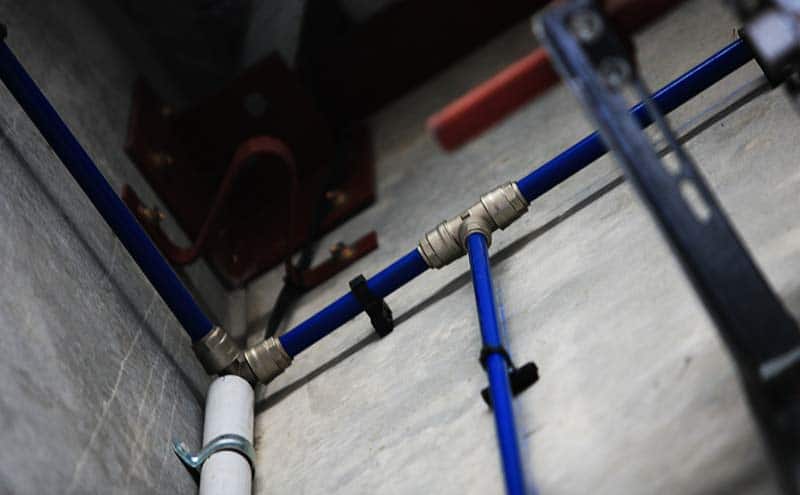
Compressed Air to Refuge Chambers
Refuge chambers receive compressed air as the primary source of oxygen and maintain positive internal pressure.
Providing a Respirable Atmosphere
Compressed air delivers a source of oxygen inside the refuge station at a consistent rate. Supported by a chemical scrubber that removes excess carbon monoxide and carbon dioxide, the air supply is the most accessible option.
Air is connected to the chamber via the main air lines and filtered to manufacturing specifications and mine safety guidelines; MineARC adheres to the AS/NZS 1716 specifications. Filtration systems for MineARC Chambers include the following:
Stage 1: Water Separator (Flood Protector)
The flood protector layer prevents large amounts of water from passing any further through the filtration system. This filter is a failsafe in the event the water line is connected to the refuge by mistake.
Stage 2: Pre-Filter
Galvanised steel inner and outer sleeved tubes remove large water and oil particles from the incoming compressed air source.
Stage 3: Coalescing Filter
The borosilicate micro-glass element screens finer particles of oil and water from the incoming compressed air.
Stage 4: Absorption Filter
Charcoal-based, activated carbon sheeting is designed to absorb contaminants until saturation occurs, including diesel particulate, odours, volatile organic compounds, small levels of carbon monoxide, and very fine oil particles.
Positive Pressure inside a Refuge Shelter
Internal positive pressure prevents hazardous substances, such as smoke, from entering the chamber.
The flow rate of compressed air must maintain a slight overpressure relative to the external pressure to achieve this. Check valves attached to a chamber vent excess pressure if the maximum airflow is reached; its self-sealing nature maintains the sealed environment.
A Study in Mine Compressed Air Simulations
Simulations are used to test and identify cost and operational improvements across multiple worksites. There have been several studies utilising alternate simulation techniques to identify efficiencies in compressed air systems.
- More basic approaches involve calculation methodologies which quantify various inputs to estimate and expected energy saving. While this method quick and straightforward, it does not take into account more complex compressed air systems.
- Single compressor simulation models provide a more in-depth, yet still limited view. This simulation simplifies the network to a single supply process and outflow to each level. Condensing compressed air systems to a single flow model limits accuracy. As demonstrated in one study which had a 10 -25% variance when estimated savings were compared to implemented results.
- For a more detailed understanding of the potential improvements, an integrated approach should be applied to compressed air models. A structured process investigating the current system, utilising data to develop and verify a simulation model, and testing scenarios to prioritise and quantify results is shown to produce the most accurate improvement strategy.
A recent case study, involving refuge bays in a South African mine used the third simulation method to demonstrate the potential savings of effective compressed air management to refuge chambers. Results showed a potential energy saving of 22MWh, the equivalent of R6.3 million per annum.
Cost-Effective Compressed Air Management for a Refuge Chamber
Air is supplied to refuge chambers for two reasons; to keep occupants breathing clean air and prevent gaseous hazards from entering.
In a mine, networks of air lines can be extensive, with multiple types of equipment, machinery, and chambers connected. Typically, refuge stations are set to run at a 50% flow rate to maintain an operational standard. If left unmanaged, refuge chambers can add a considerable strain on compressed air usage.
Table 1: Air Consumption per Machine
| Equipment | CFM | Nm³/h |
| Jumbos | 55 | 89 |
| Production Drills | 540 | 869 |
| Raise Drills | 900 | 1449 |
| Shotcrete Rigs | 400 | 644 |
| Air Pumps | 20 | 32 |
| Diamond Drills | 20 | 32 |
| Development Charge Up | 100 | 161 |
| Production Charge Up | 100 | 161 |
The flow diagram below indicates the path a compressed airline will take before reaching the mine site’s major production requirements.
The green data indicates a compressed air line with CAMS on the refuge chambers. What this is demonstrating is how the pressure sensor and automated shut-off valve work conjunctively to regulate airflow.
Once the refuge chamber reaches the required internal positive pressure, the shut-off valve is activated. If the pressure sensor detects a drop below 200Pa, the valve opens and emits bursts of compressed air to maintain the positive pressure and reduce the risk of over pressurisation. Without CAMS, air will continually flow through the chamber.
Removing the free flow of compressed air to the refuge reduces wastage and strain on the system while ensuring critical operational equipment remains optimised. For example, savings can be equivalent to turning off a 75 kW compressor at 10 bar.
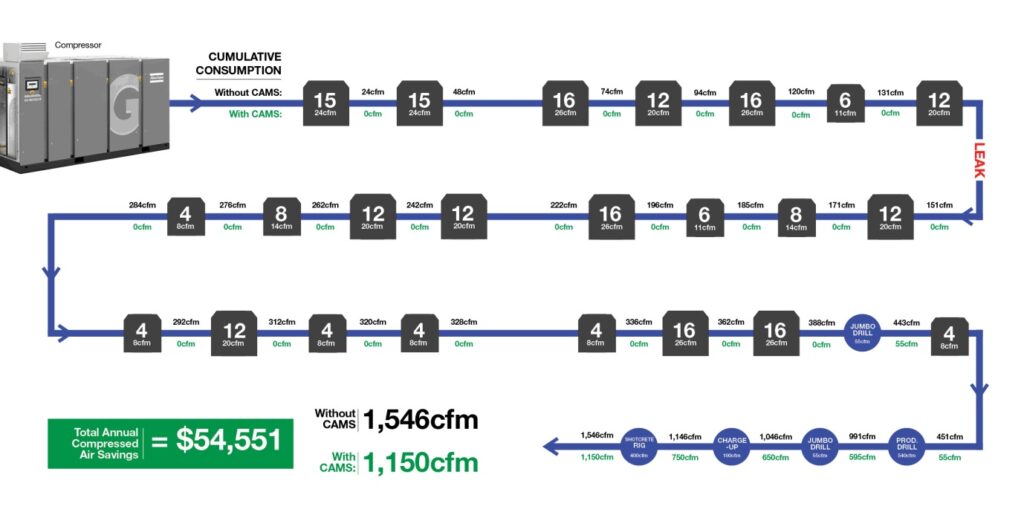
Efficient use of compressed air can save sites significant energy, resulting in financial and environmental benefits. Investigating a practical approach will establish new performance benchmarks for on-site compressed air networks. There are multiple tools available to companies, from simulations to more accurately identify a strategy, to management systems to execute best practice. Proactive management is critical to strategic operations and accommodates changing circumstances surrounding energy.


